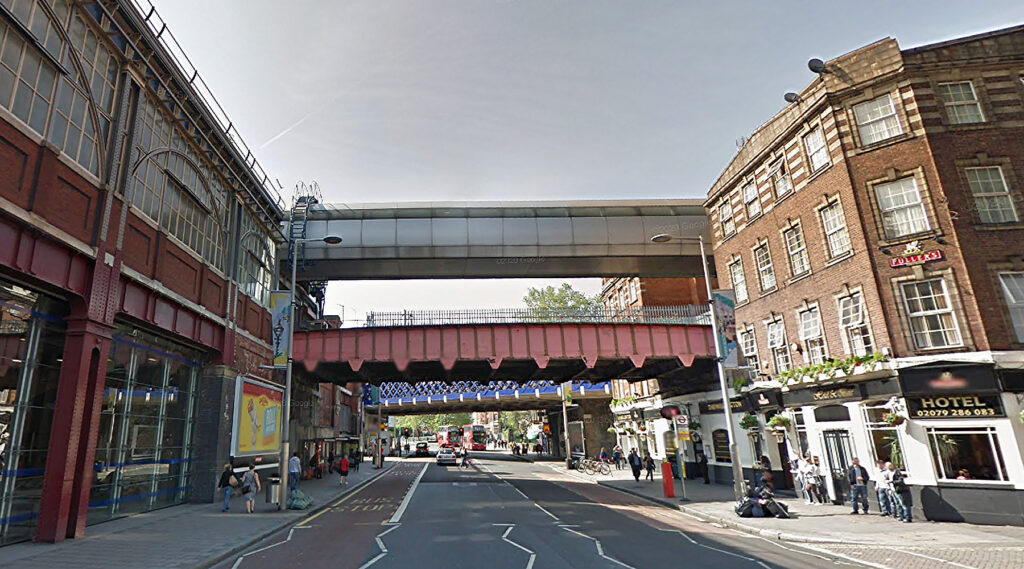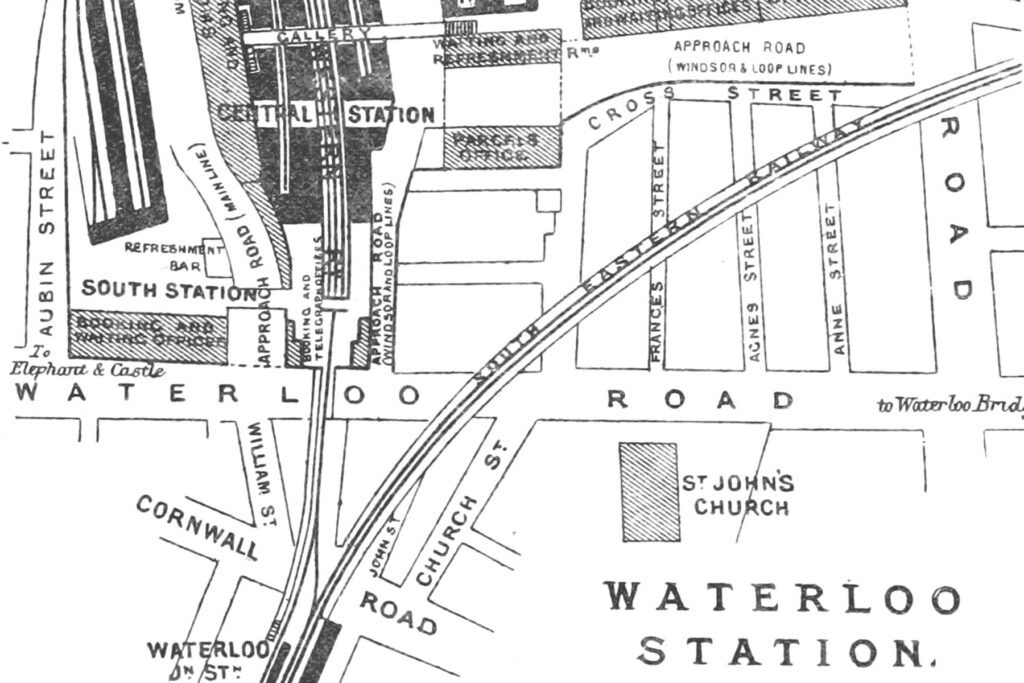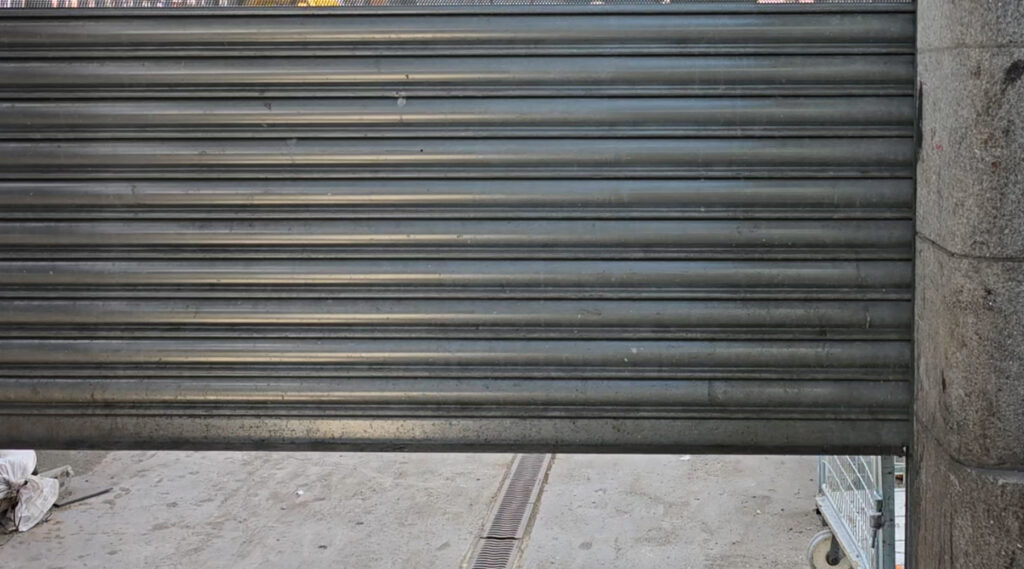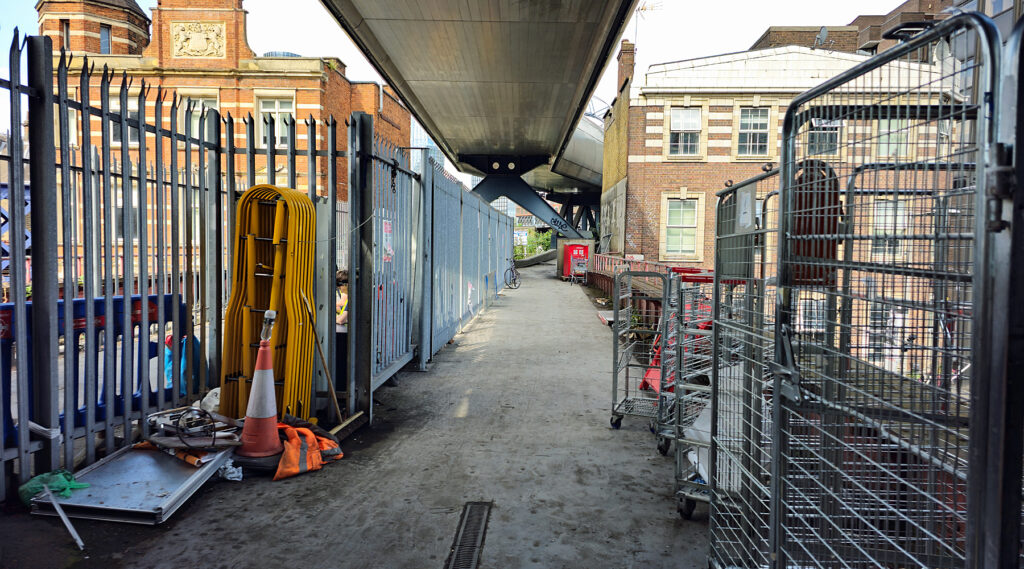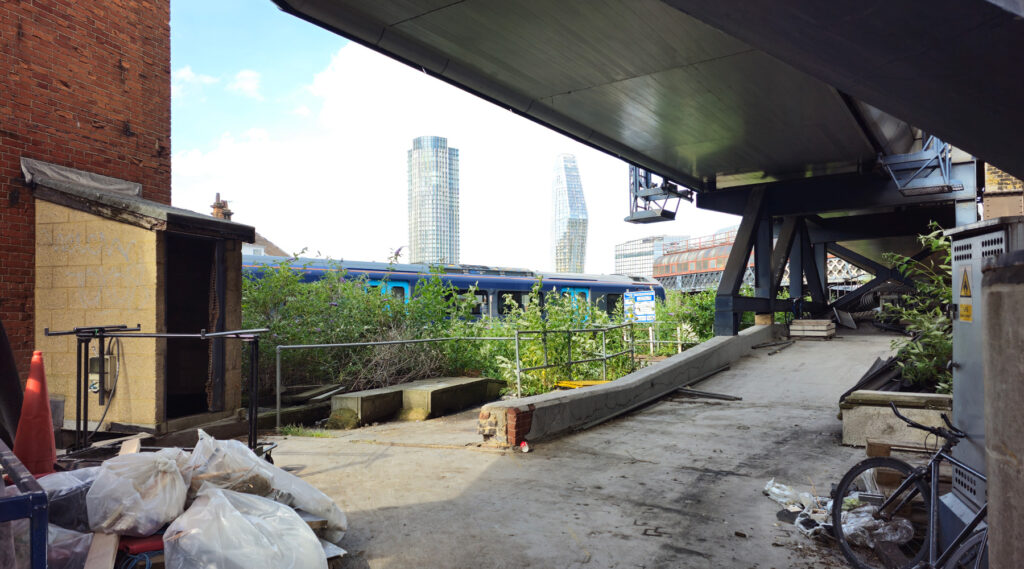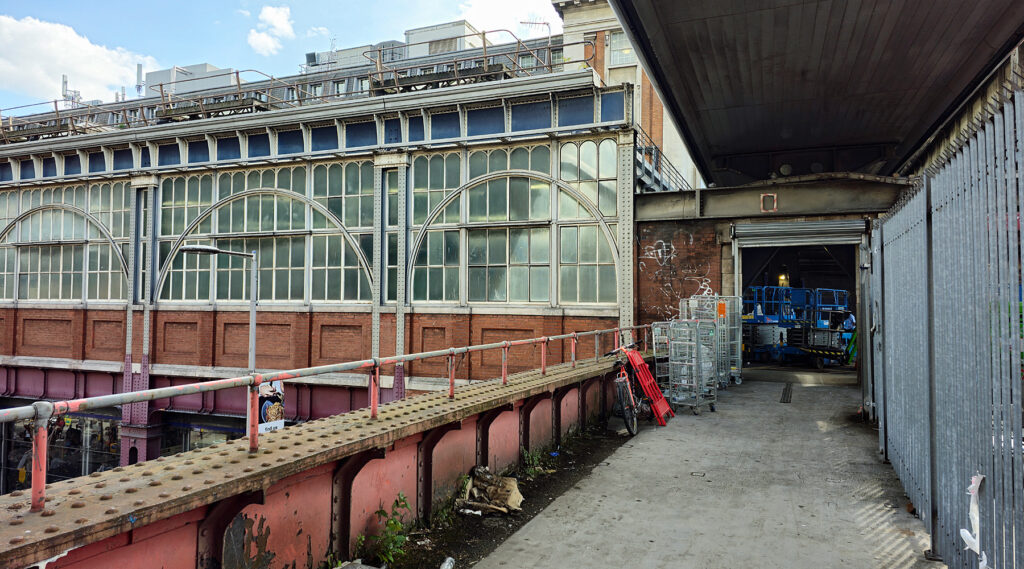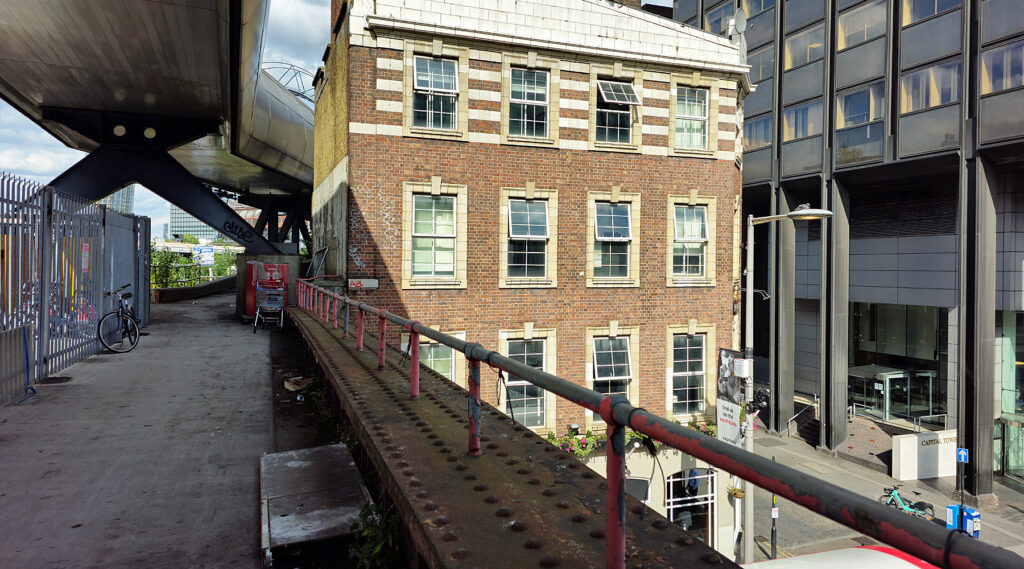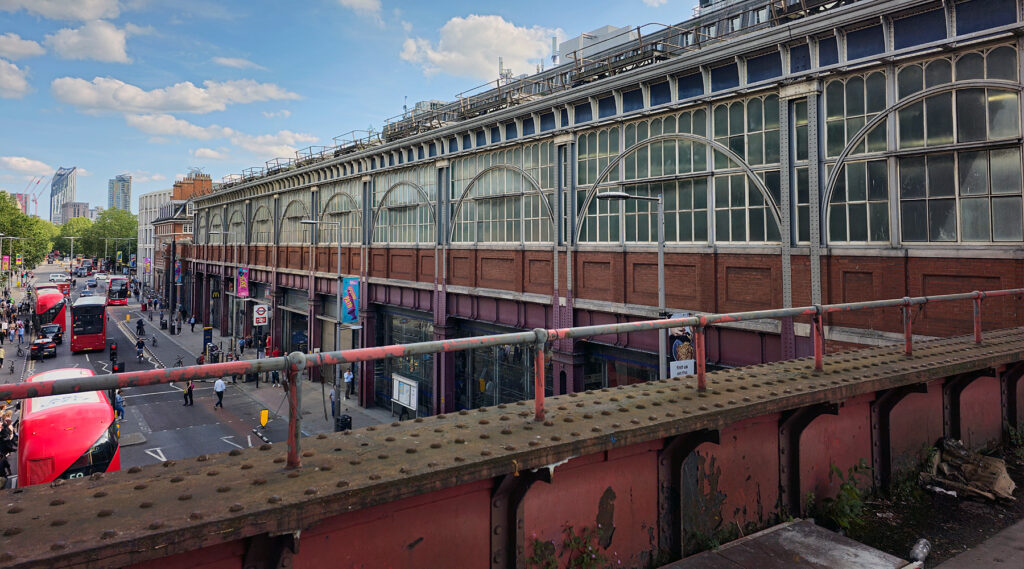Photos from Waterloo Station’s disused rail link – London
There was once a railway link between Waterloo Station and its smaller neighbour at Waterloo East, and while long since closed to trains, the link remains in place if you know where to look. In fact, it’s not difficult to find, but many thousands of people see it every day as it’s the old red bridge that sits underneath the modern pedestrian corridor linking the two stations.
And how many people have wandered past wondering why there’s a double-decker bridge here?
The bridge came about as a deal between the London and South Western Railway (LSWR) which built Waterloo Station in 1848, and the South Eastern Railway (SER) which later built a railway between London Bridge/Canon Street and Charing Cross in 1864/66.
With a railway running right in front of Waterloo Station and the South Western Railway being keen to extend its services into the City, in 1867, the two companies agreed to build a rail link between the two stations. The rail link, and a new station, originally called Waterloo Junction (now Waterloo East) opened[1] on 1st January 1869.
It wasn’t much of a link though, being a single track that connected Platform 3 in Waterloo station with Waterloo Junction station’s two platforms. The photo below from Getty Images shows the rail link coming out of a grand looking stone gateway.
Opening the new station at Waterloo Junction had an unexpected effect though, on prostitutes.
When the link between Cannon Street and Charing Cross opened in 1866 the train trip was just long enough[3] for ladies to entertain their customers while paying a nominal fee for the train ticket. Alas for them, when Waterloo Junction opened, it meant people got on the trains in mid-act, and the ladies decamped from the railway sharpish.
Away from the ladies of the night, Queen Victoria occasionally used the connection for royal trains travelling from Windsor Castle to Dover and Continental Europe.
A little-noted fact about the railway link is the effect it had on Waterloo Station. The railway passed through the middle of the concourse, but as the platforms and concourse are at the same height, the railway tracks will be several feet lower, as they are today at all railway platforms. That meant though that the railway passing through the middle of Waterloo station concourse wasn’t doing so at platform level, but in effect in a deep canyon[4] through the middle of the station with a fairly steep slope down and back up again.
Sadly though, the trains proved far less popular than the South Western Railway had hoped for, especially after the Waterloo and City line opened in 1898 and when Waterloo Station underwent a major rebuild in the 1902-22 period, the rail link was removed.
Although the railways stopped using the bridge, the bridge was retained as the southern half had been covered over and used as a pedestrian link between the two stations, with a ramp up to the footbridge at Waterloo East.
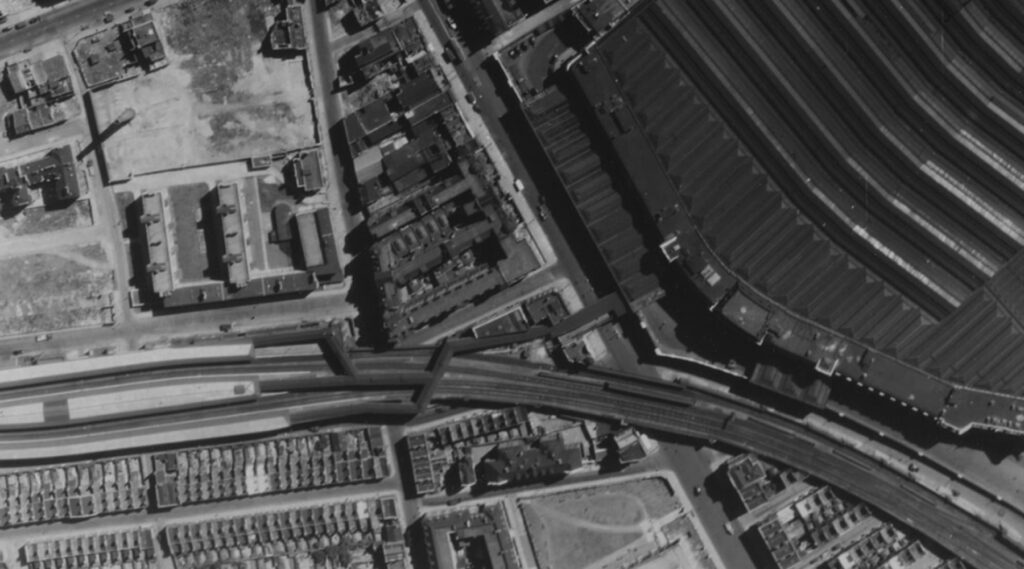
RAF photo taken on 18th May 1948 via Historic England archive
In the 1990s, that ramp and the use of the old bridge were demolished and the modern tube was built above at the same height as the Waterloo East footbridges, with escalators inside Waterloo Station.
On the visit to see the arches underneath the station[5], our Network Rail guides agreed to let us have a closer look at this — within railway fans at least — famous old railway bridge.
Access to the original railway bridge is now only possible through a locked shutter, and the moment the shutter started to make that growling sound of being lifted out of the way, our small group got quite excited to see what’s beyond.
In a peculiar way, after an hour in the bowels of the station, this small bridge felt remarkably exciting as it’s a space that millions of people have seen, and many will have wondered about it and what it looks like up there today.
And we were about to stand where trains once used to cross between stations!
In a way, there’s not a lot to see here. It’s an old bridge that is showing its age in places but still looks to be in remarkably good condition for something that’s over 150 years old.
At the far end, an invisible line that we were not to cross as there’s a live railway just beyond where we could see Southeastern trains carrying passengers to their destination at Charing Cross. Above us is the 1990s era section of the footbridge with people crossing between the stations unaware of the excited group of people beneath their feet.
We stood there taking in the moment of being allowed to stand there, looking over the edges at the busy road below and simply enjoying the experience.
It’s only a small bit of old railway bridge, but that strange rail link between the two stations is almost mythic in railway lore, and to be allowed to stand on that famous bridge for a few minutes was one of those moments that left us all with big grins on our faces.
References
- ^ opened (www.awin1.com)
- ^ Embed from Getty Images (www.gettyimages.com)
- ^ just long enough (www.amazon.co.uk)
- ^ deep canyon (www.londonreconnections.com)
- ^ arches underneath the station (www.ianvisits.co.uk)
